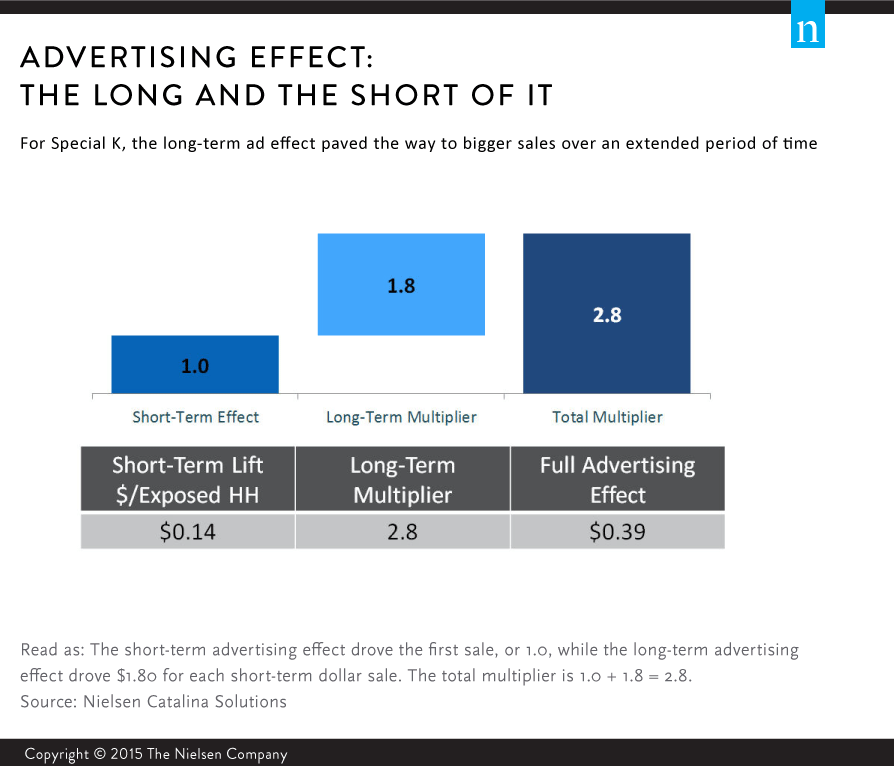In today’s fast-paced world, it’s no surprise that many of us are quick to seek out immediate gratification in our daily lives. From a marketing perspective, particularly as digital media engage with us in an ultra-real-time fashion, it’s easy to lose sight of the long game when it comes to the effect of advertising. Truth be told, however, advertising can be just as effective—if not more so—over the long haul than it is at the time it launches.
And in that respect, it’s critical for marketers to understand how advertising affects brand value over time, as well as how it’s connected to brand loyalty. Short-term sales are wonderful, but the true testament of an ad is its ability to cultivate loyalty among consumers who ultimately identify themselves through the brand behind it.
Most advertising models show that loyalty is the largest driver of brand choice. Loyalty influences three key things: the price a consumer is willing to pay; the degree to which a competitor’s marketing activities can change consumers’ behavior; and how regularly the consumer buys the brand. The data from a recent study by Nielsen Catalina Solutions (NCS) makes it clear that the higher the loyalty, the higher the future brand sales will be.
Beyond Rules of Thumb
While the discussion around measuring the long-term effects of advertising often focuses on a rule-of-thumb equation, marketers can gain a much deeper understanding by examining how advertising builds sales—both in the short and long-term. The NCS study measured the contribution that advertising makes in building a brand over time. The work focused on segmenting consumers in a way that discriminated and differentiated them based on how much they will spend in the next year, and understanding some of what drives repeat purchases. Advertising that builds strong emotional and behavioral consumer connections that drive sales in the long term, also drives brand loyalty and total brand value.
The research, which NCS conducted in collaboration with CBS Corp., involved 31 studies that looked at the factors that drove the long-term effectiveness of ads for 23 U.S. packaged-goods brands. To conduct the studies, NCS tracked purchases from households that were exposed to advertising for one year after the end of the short-term period. The research found that while long-term effectiveness metrics vary by brand and ad campaign, factors like purchase cycle, frequency of purchase and weekly spend are among the critical elements that drive long-term effectiveness.
To assess long-term ad-driven buy and repeat behavior in the market, marketers typically double their short-term sales, a technique known as the “2x multiplier.” The multiplier is the relationship between the sales lift generated in the “long term” and the sales lift generated in the “short term.”
Marketers typically view short-term sales as the sales that are directly influenced by the advertising, which is generally within 12 weeks of exposure, while the long-term perspective includes the indirect purchases that were influenced by increased by loyalty with spans one to two years thereafter. Findings from the new NCS study support the premise that the average multiplier for the long-term effect of advertising is approximately twice that of the short-term effect. While this may help marketers understand how advertising works in general, it doesn’t offer any brand-specific insight.
That’s where the granularity of single-source data comes in. Unlike general knowledge, it allows advertisers to better understand the actual drivers of this long-term effect, and how it varies by brand. When brands know their actual long-term multiplier, they gain critical to insights into:
- The actual differences between short-term marketing tactics and the total impact of advertising
- The value of advertising to different brands in the same portfolio
- The differences between different marketing/advertising campaigns, and
- The general health of a brand
The Long- and Short-Term Ad Effect by the Numbers
The size of the long-term effect has a direct impact on the return an advertiser can achieve through advertising. Learning how to increase the effect will therefore help advertisers understand how their advertising will perform now and in the future.
In looking at the long- and short-term effect of a recent Kellogg’s Special K ad campaign, Kellogg’s found that the short-term advertising effect drove the first sale, or 1.0. Comparatively, the long-term effect drove $1.80 for each short-term dollar sale, yielding a total multiplier of 2.8x of total advertising driven sales. The short-term lift was $0.14 of sales per exposed household, and the total was $0.39 per exposed household, or 2.8 times more during the year following the campaign.

Brands and advertisers now have a way to quantify the full value of their advertising. They can also make more informed decisions about their marketing strategies.
For additional insight, view our on-demand webinar and download the Journal of Advertising Research Paper.



